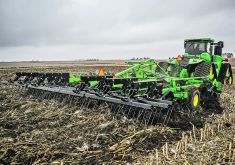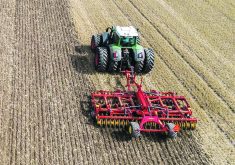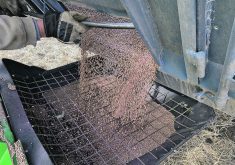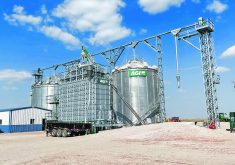Some people are lucky enough to start their grain bin yard from scratch.
Having a favourite perfect location in mind is one of the first mistakes a producer can make in designing a new system. The desired spot might be good in all ways expect one. The soil might not support the dream bin yard.
When Evan Erlandson envisioned a new from-scratch terminal for his Red River Grain Company three years ago, his first move was to hire an engineering firm to conduct a geo-technical load-bearing analysis.
The news wasn’t good. The entire facility was supposed to fit on a four-acre parcel. Erlandson knew he needed maximum sized bins if he wanted to make the new grain company on such a small piece of land.
Related stories:
So the engineers design the foundations based on the maximum floating bin the soil could support. All structures on the four-acre Red River Grain Company site are floating. There are no piers.
The following excerpt is taken from a Western Producer article from January:
“In drawing up the placement of components, I’ve made space for the biggest bins I can possibly build without putting piers under them. I expect to add more of these 190,000-bushel dry grain bins. They’re all floating bins.
“We did the geo-technical load-bearing analysis and then we got an engineer to design the foundation under the bin and tell us the maximum bin we could build. We excavated big pits and back filled with aggregates and poured our foundations.
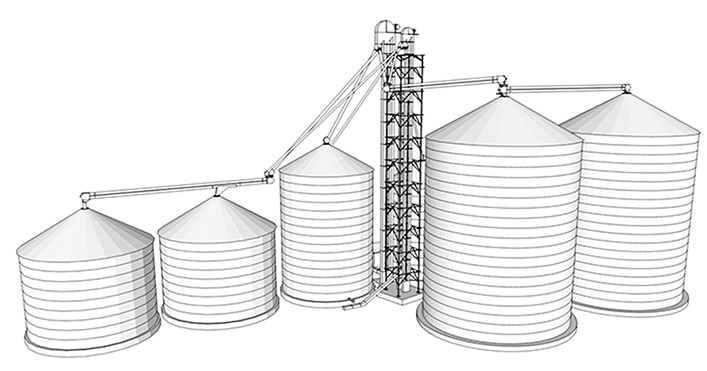
“I can almost guarantee that in 10 years, I will wish that we had put down piers, but it was a matter of cost. We now have two of these 190,000-bushel bins, and I have space for three more. Eventually, the small footprint and lack of piers will hamper our expansion. We’ll find a way to make it work.”





